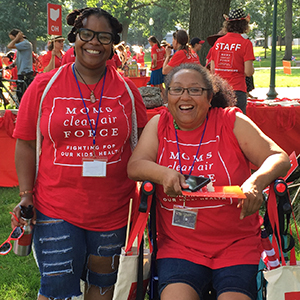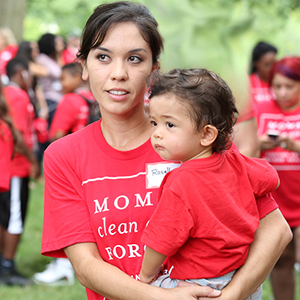This resource has been factchecked by policy experts, using the latest scientific research. Find all our sources linked below.
Kids spend a lot of time at school, mostly indoors. When school air quality is unhealthy, students suffer. The EPA says indoor levels of pollutants can be two to five times (and sometimes more than 100 times) higher than outdoor levels. Poor indoor air quality in schools can come from a variety of sources and has been linked to decreased concentration and reduced academic performance. It can exacerbate learning and behavioral disorders, increase absenteeism, and also contribute to asthma attacks, headaches, fatigue, nausea, and rashes.
Clean school air is essential for kids and staff. Living through a global pandemic put school air filtering systems on the radar of most districts, parents, and caregivers. They’re an effective way to reduce the spread of airborne illnesses. Still, developing healthy indoor air quality at schools involves addressing much more than disease.

What's in school air?
Every school is unique. The EPA estimates that up to half of the nation’s schools have problems with indoor environmental quality. Old or aging schools are obvious culprits, but air quality issues related to overall environmental issues can be found in new buildings too. General factors specifically affecting school air include:
- Tailpipe pollution: Fumes enter schools located close to heavily trafficked roads as well as from idling diesel buses and delivery trucks.
- Industrial pollution: Proximity to facilities like bus depots, chemical facilities, and incinerators can increase indoor air pollution.
- Cleaning products: Chemicals in conventional cleaners have been linked to asthma, allergies, and cancer.
- Pesticides: Active ingredients in pest control used in and around school buildings can diminish air quality.
- Toxic chemicals: Found in building materials, paint, floor sealants, furniture, art supplies, science materials, and more, all can potentially pollute indoor air.
- Mold: Water enters through leaky roofs, pipes, windows, foundations, floods, poor drainage, and other routes. Breathing mold can cause allergic and respiratory symptoms.
- Hazardous materials: Known hazards, including asbestos, radon, PCBs, lead dust from paint, and mercury in flooring, are of concern, especially at older facilities.

Creating good indoor air quality
The steps to improve and manage school indoor air quality are well established. The process involves controlling airborne pollutants, introducing and distributing adequate outdoor air, and maintaining optimal temperature and humidity levels. There are simple—and often low-cost—ways to tackle air quality problems (e.g., opening windows when weather and outdoor air pollution permits) while other improvements may require expert help (e.g., fixing a leaky roof). Installing filtering systems along with increased ventilation can reduce allergens, including pollen, dust, and wildfire smoke—and help with any unexpected future pathogenic threats. Schools with air filtration systems need to clean them regularly. Funding may be available for local districts to address school air pollution—from monitoring air quality and reducing pollutants to technical assistance combating environmental issues. Check with your state.

Simple steps to clean school air
Here are some low-cost solutions to address typical pollutants found in school air.
- Tailpipe pollution: Establish—and enforce!—no idling rules for buses, trucks, and drop-off and pickup lines, especially near playgrounds, doors, and windows.
- Safer cleaning: Some states require the use of green cleaning products in schools to safeguard the health of maintenance workers, students, and staff. If yours does not, ask to replace conventional cleaners with widely available and effective options with fewer or no hazardous chemicals. Also, declutter classrooms to allow air flow, use vacuums with HEPA filters, wet wipe surfaces to suppress dust, and install floor mats to trap dirt and debris.
- Pesticides: Prevention can minimize infestations, reducing pesticide use, so caulk cracks and take similar measures. Should a pest problem arise, rely on natural or safer products.
- Toxic chemicals and hazardous materials: Dispose of potentially harmful materials, then use safer products, furniture, paints, and more.
- Mold: Identify and fix sources of moisture, clean existing problems, and employ exhaust fans or dehumidifiers for chronically damp areas.

Community impacts and school indoor air pollution
Children in historically marginalized communities of color are disproportionately exposed to environmental hazards, including at school. Systemic racism has created practices that force Black, Brown, and Indigenous families to attend school in places more susceptible to toxic air pollution. These schools are more likely to be dilapidated or decaying and possess fewer resources to fix—or prevent—the issues leading to poor indoor air quality. They’re also more likely to be sited near industrial facilities.
Take action
Parents and caregivers are frequently unaware of school conditions. To get familiar with the conditions and prioritize assessing and improving indoor air quality, join forces with groups like the PTA or an environmental club. There are likely other families—plus teachers and maintenance staff—similarly interested in creating an air quality management program.
You can also support state efforts promoting safer cleaning in schools and point your district to opportunities for federal funding and other school air quality improvement grants. Get involved in the larger movement to strengthen federal chemical policy. Many products used in and around schools contain chemicals that haven’t been adequately tested for safety.
Join Moms Clean Air Force in advocating for better air quality in schools to protect our children.
Learn more about Moms’ work on schools.
Full list of sources.
Updated: February 2025




